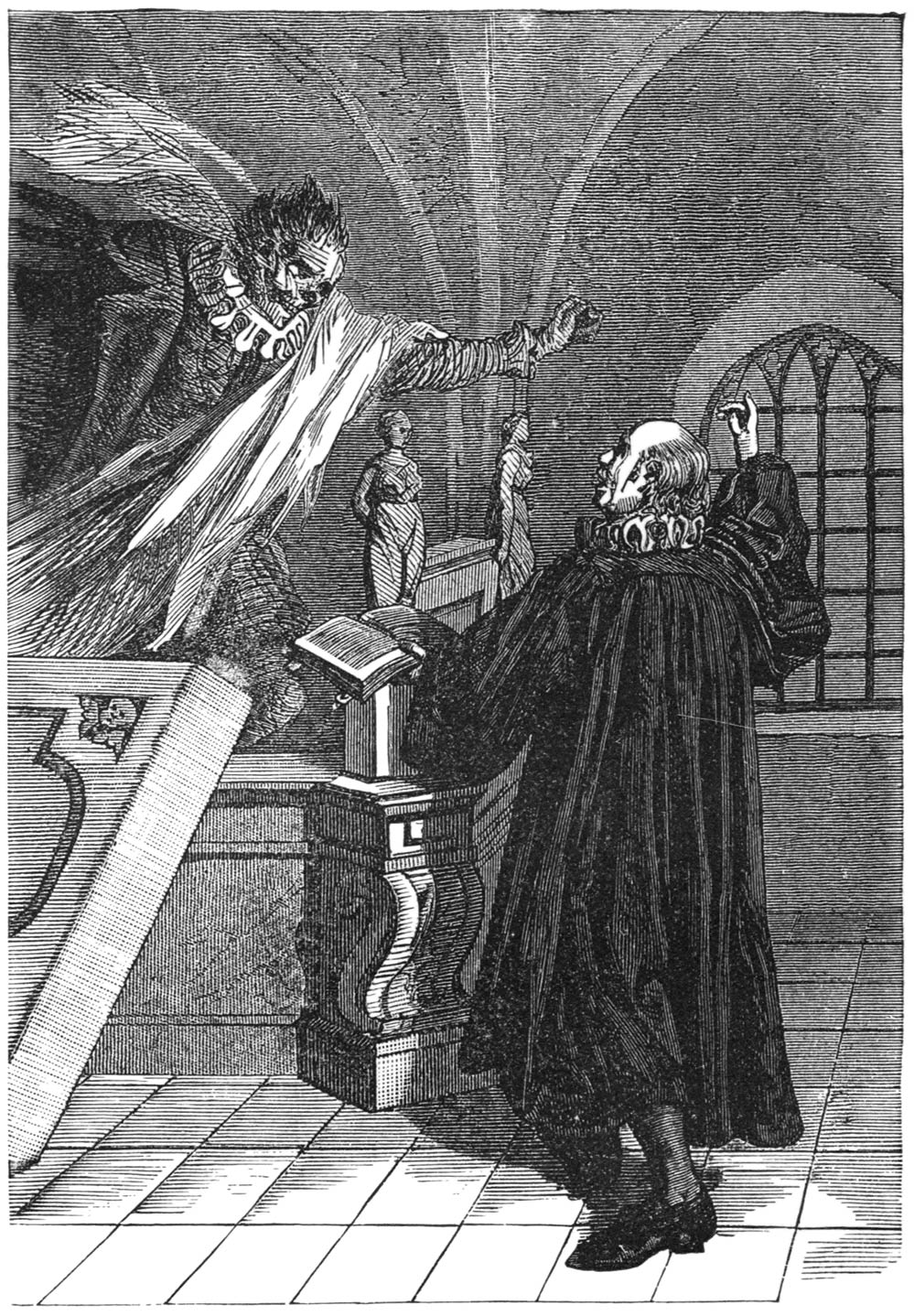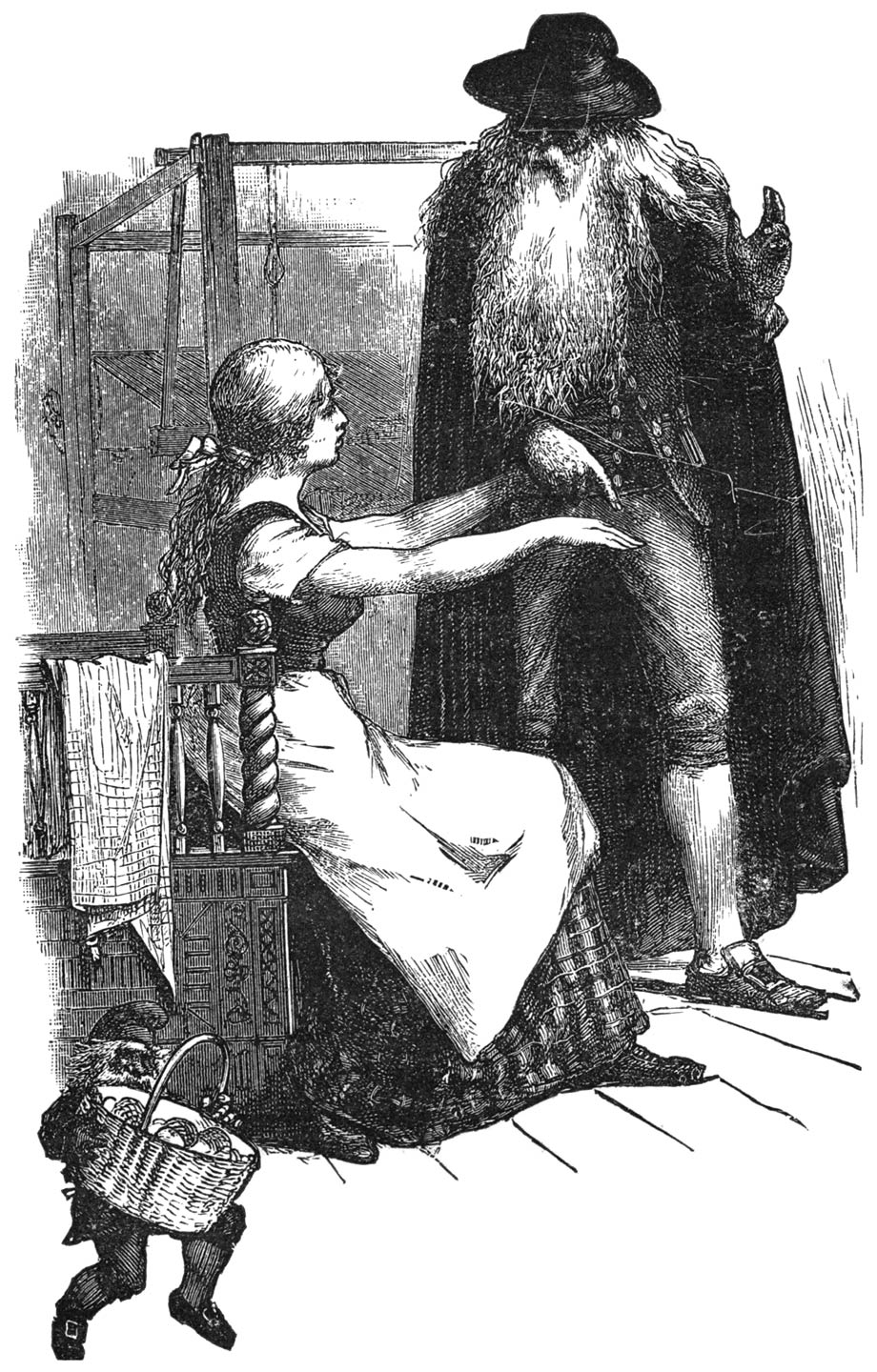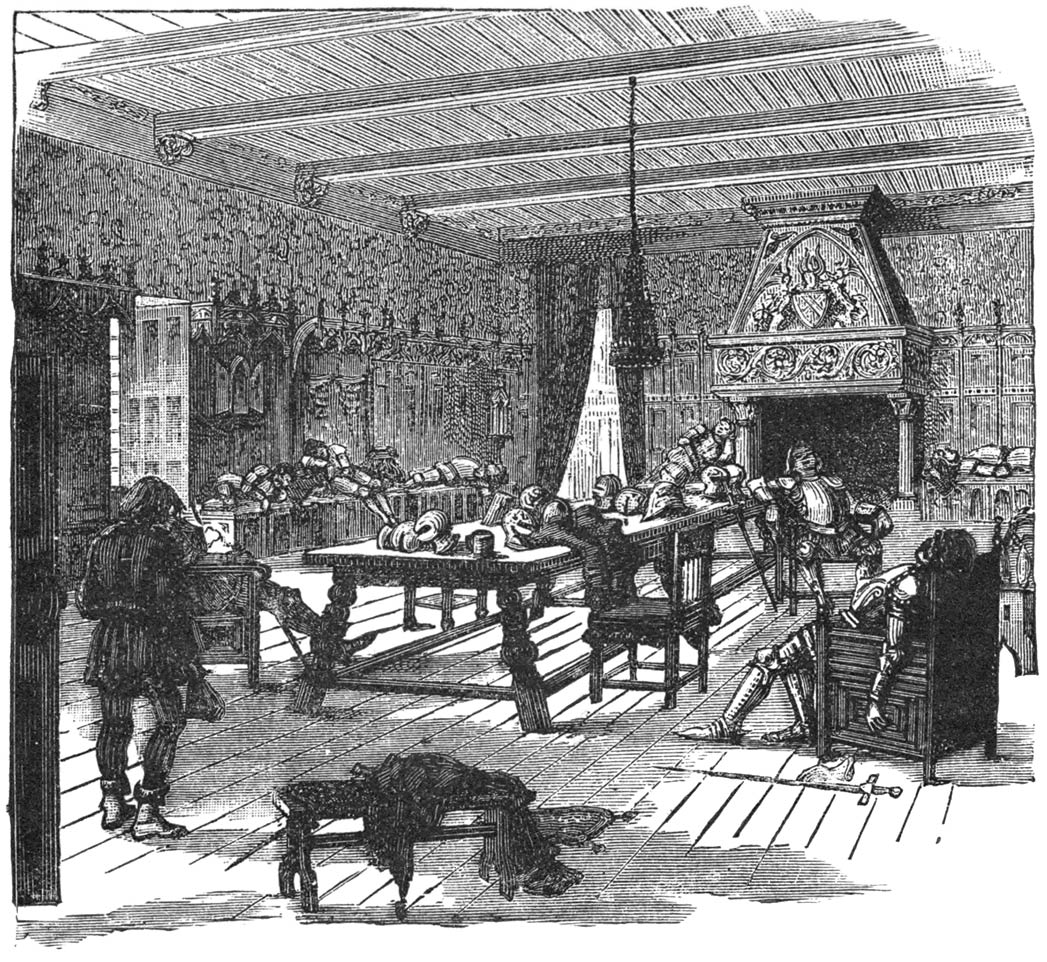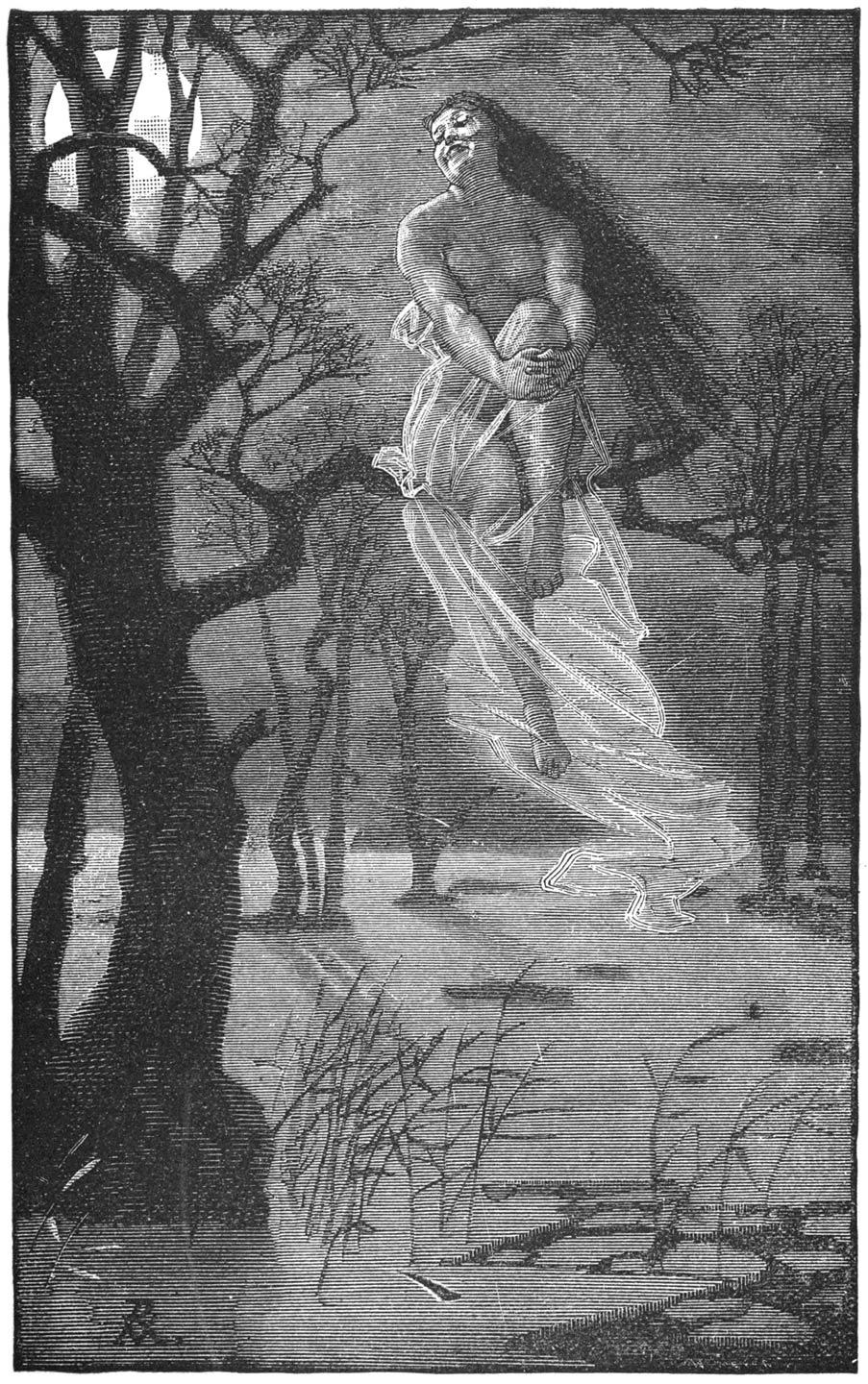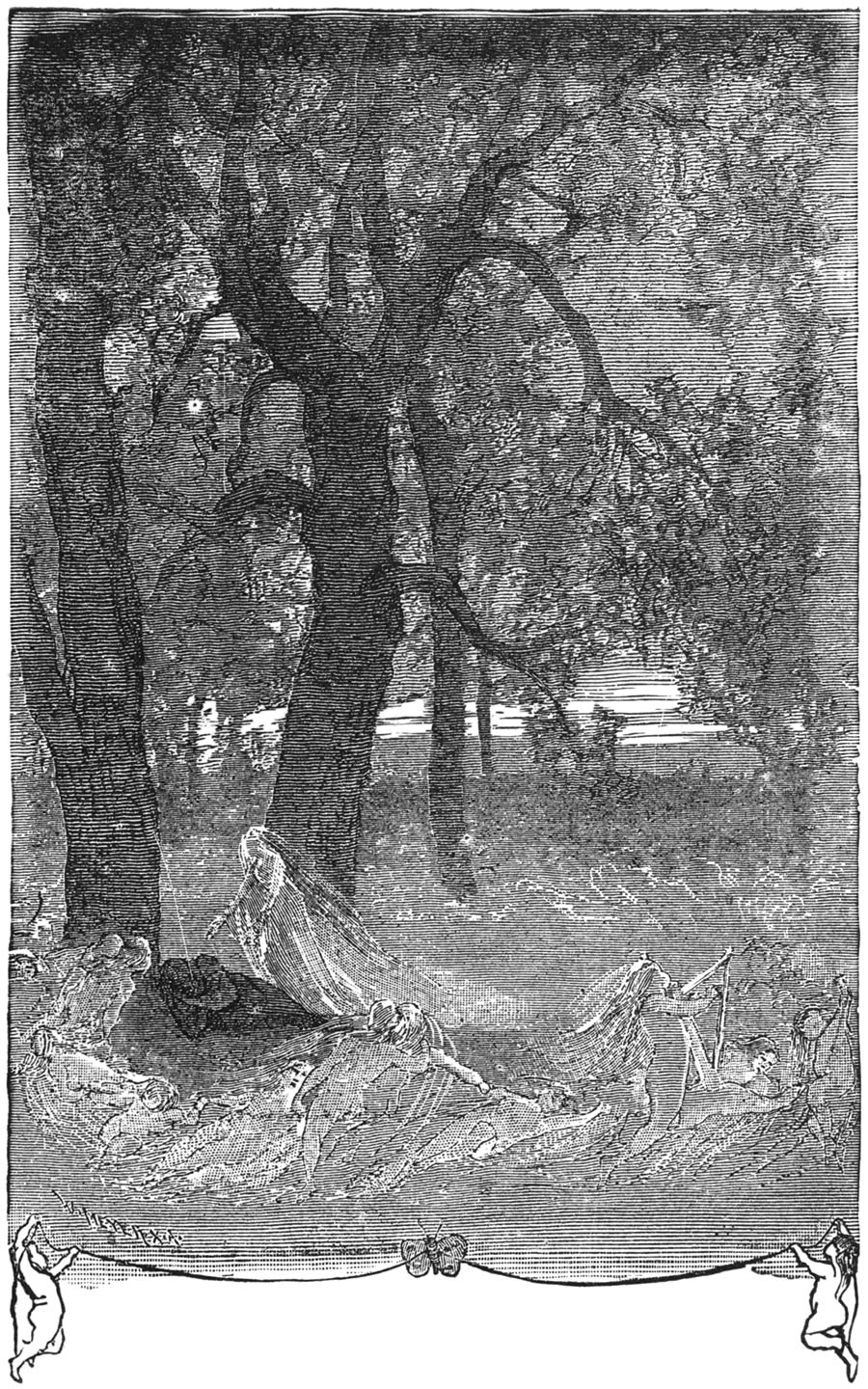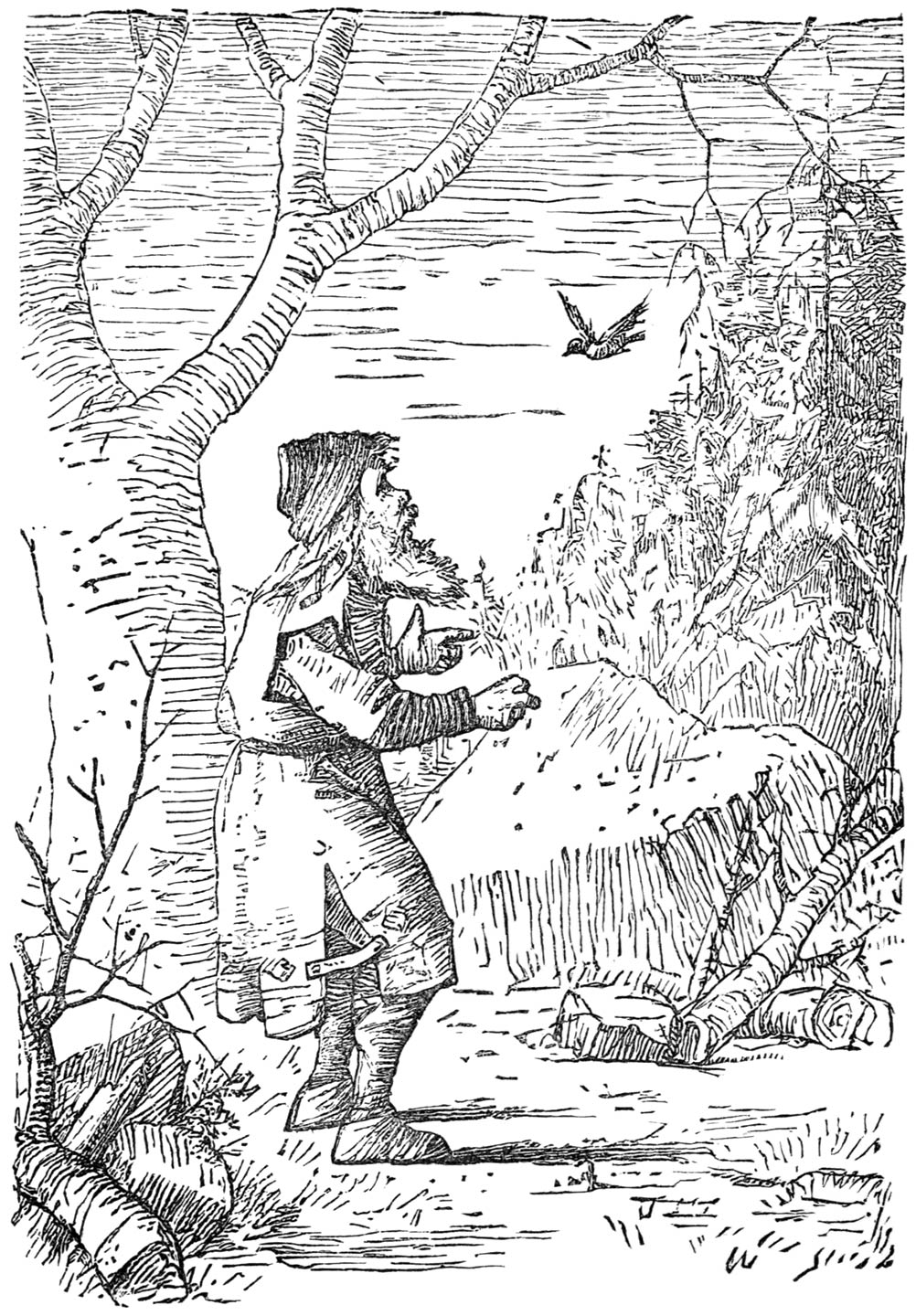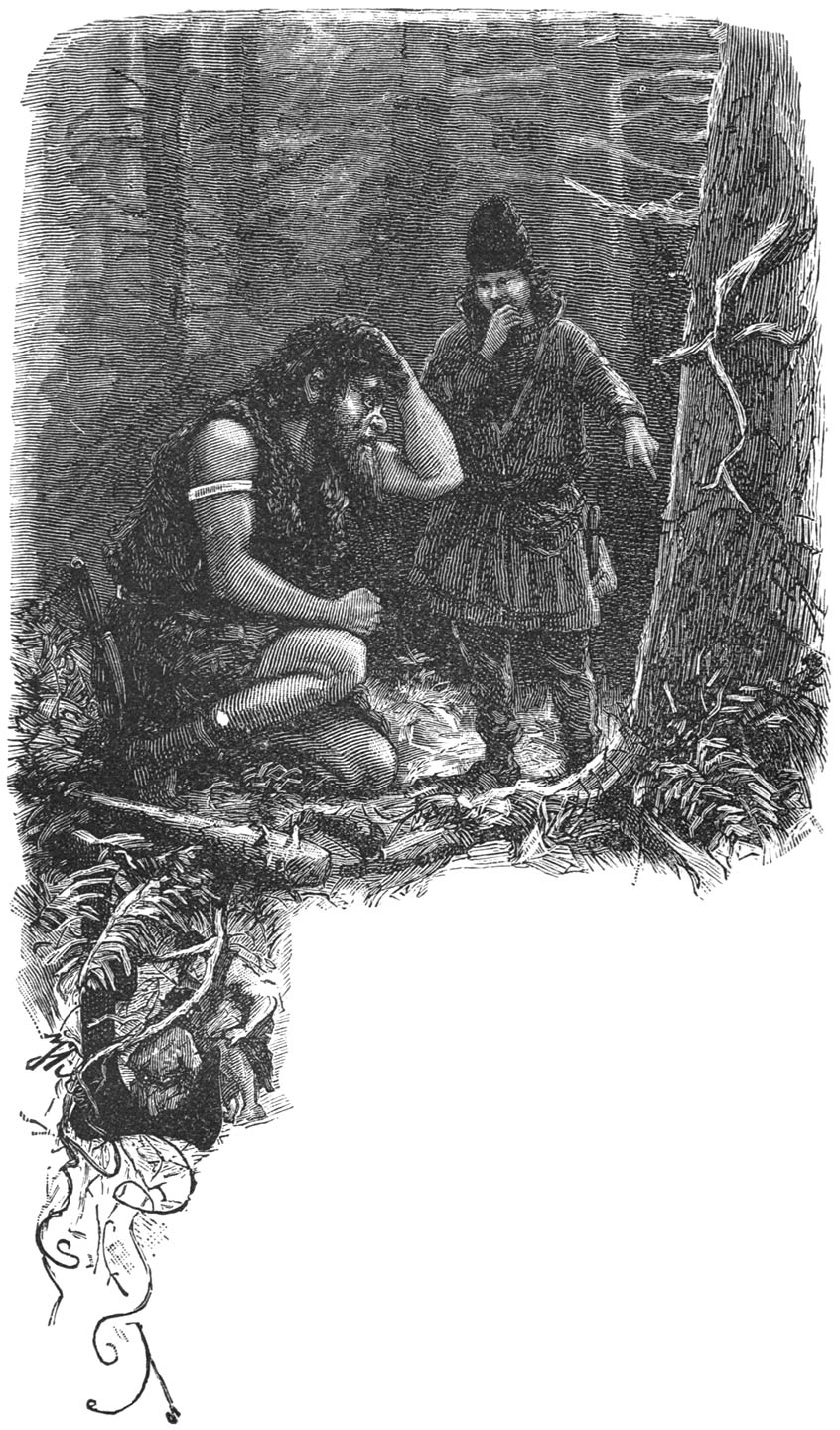In one of the picturesque valleys of romantic Småland and on the Black River is a
noted waterfall called Stalpet, which, after placidly winding, by many hundred bends,
for a considerable distance, through green meadows, here makes a precipitous descent
over a rocky cliff, then quietly pursues its course to a lake a short distance beyond.
Not far from Stalpet lies an old manor, dark, gloomy and unoccupied. A feeling of
oppression comes over one in the presence of this large building, [56]barred gates and nailed up windows, and the question is asked, why should this naturally
beautiful place be untenanted? Why is there not, at least, a watchman or an attendant?
There must be some unusual reason for such a condition of things.
Let us listen to the narration of a good old woman, resident in the neighborhood,
who once gave us the story. We use her words, which, may be, enter too much into the
detail, but bear with them the natural freshness and coloring that, it is hoped, will
not be tedious to the reader. We are given to understand that if we will have the
story we must begin at the beginning, and that is, like “Milton’s Paradise Lost,”
with the beginning of all things.
“Know that when Satan was cast out of heaven, on account of his pride, and fell to
the earth, there were other spirits, which, like him, were also cast out. These spirits,
in their fall, were borne hither and thither on the winds like the golden leaves in
the autumn storm, falling to earth finally, some into the sea, some into the forests
and some upon the mountains. Where they fell there they remained, so the saying runs,
and found there their field of action. After their abiding places they were given
different names. Thus we have sea nymphs, mountain fairies, wood fairies, elves and
other spirits, all of which are described in the catechism.
Now, it happened, that on that day two spirits fell upon the rock where this old Katrineholm
Manor house now stands. In this mountain their offspring lived many hundreds, yes,
thousands of years. Though [57]some of them were from time to time killed by lightning and otherwise, they were not
exterminated and had not been approached by any human being.
It happened, a long time ago, that a gentleman, who owned this estate, wishing to
build himself a residence, and, like a wise architect, to have a solid foundation
for it, selected this rock.
The mountain king—for he was a king among his people—was very much displeased with
this, but his wife, who was of a milder disposition, pacified her husband and urged
him to wait and do their neighbors no harm until it could be known whether harm might
be expected from them.
When the house was finished the gentleman married a beautiful young lady whose presence
at once filled it with sunshine and joy. But sorrow visits many who little expect
it and so it was here.
One day when the young wife was alone in her work-room, a little woman, unexpectedly
and unannounced, stood before her. Bowing, she said: “My mistress bids that you visit
her, and directs me to say to you that if you consent she will reward you richly.”
The young wife wondered much at such a request, but having a brave heart and a clear
conscience, she promised to follow. The little woman led the way down stairs to the
cellar, where she opened a door, until now undiscovered, revealing a passage into
the mountain. Entering the passage, which was long and dark, she finally emerged into
a large, well-lighted cave, whose walls were sparkling with gold and silver. Here,
pacing back and forth, as if in great anguish, was a [58]little man who looked at the new comer searchingly, and with an humble and pleading
expression in his eyes, but said nothing. The little woman pushed aside a curtain
to an inner cave, at the further end of which the visitor saw, lying upon an elegant
bed, another little woman sick and laboring in child-birth. The Christian visitor’s
presence had the effect to almost immediately still the pains of the suffering woman,
whereupon she drew forth a box filled with precious stones, pearls and jewels. “Take
this as a memento of your visit to me, but let none know what has happened to you
this day, for as surely as you do great misfortune will overtake you and yours,” said
the Mountain Queen, and directed that the young wife be given safe conduct to her
room again. As soon as left alone the precious box was carefully secreted.
Time sped on. Everything went well, and in due time the young wife herself became
the mother of two beautiful sons. One day, during the mother’s absence, the boys discovered
the secreted box, and had just begun to play with it when their father entered. He
was greatly surprised to find such a treasure in the hands of the children and began
at once to question the mother, who had also entered, as to how she became its possessor.
At first she refused to betray the secret, and with her refusal the husband became
more curious and suspicious, finally angry, when he declared his wife a Troll, and
that he himself had seen her come riding through the air on a broomstick. The poor
wife was then obliged to reveal her visit to the Troll queen and the circumstances
attending it.
[59]
“You and I have seen our happiest days, for your curiosity will bring us greater misfortune
than you have dreamed of,” said she.
A few days later there appeared in the adjacent lake an island, which, strangely enough,
seemed to rise from its bosom when anything remarkable was about to take place. It
is related that shortly before the death of Charles XII., also before that of Gustav
III., the island became visible, and it is even said that a king one time carved his
name on a stone on the island, and that stone and name, when, on another occasion
the island was visible, were to be seen.
Whether the island was now again visible by some power of the Trolls in unison with
the water spirits is not known; it is enough that the island appeared, and that the
lord of the manor became possessed with a great desire to go to and inspect it.
He expressed a wish that his wife and boys should accompany him. The mother, who foresaw
misfortune, opposed the project with all her energy, and upon her knees begged and
prayed her husband to postpone his visit, but without avail.
Finally, the willful man took the boys, leaving his wife at home, and rowed out to
the island. Just as the boat touched the enchanted island both boys sprang upon it,
and at the same instant both island and boys vanished from the father’s sight to be
seen no more.
The poor mother mourned herself to death, and the father departed to foreign lands,
where he also died, but the building on Katrineholm has never since been occupied, and there is little probability that any one will
in the future prosper in it.
[60]



